Update: Attempted star trail... (30th July 2004)
This didn't work quite as I expected, probably
because the full moon was casting too much light into the slightly overcast
sky. However, the exposure was a lot closer to the mark this time, which meant less
compensation in Photoshop, and therefore a LOT less noise. It could still
be better, but in these images the speckles (see other section below) have basically faded away to nothing.
This was one of two images shot from the same spot. Somehow the camera shifted slightly
between shots, even though I have a wireless remote and both images are sharp.
Now that I've been able to see that
(close to) correct exposure results in a
very clean image, I think I'll just leave the shutter open for longer rather
than fiddle around with merging images to reduce noise.
One other thing that I should be clear on - both evenings were quite chilly. I
don't know if CMOS sensors are affected by temperature the same way that CCD sensors
are, but the low temperature (approx 8C/46F) may have contributed to the lack
of noise.
TIP: Do a test shot at a higher ISO to quickly figure out a suitable exposure. I did mine at 1600, then went back to 100 or 200 (multiply exposure times by 16 and 8 respectively).
1:1 crops from the image

Crop #1
(Levels only, no sharpening) |
|
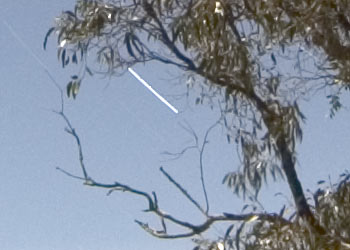
Crop #2
(Levels only, no sharpening) |
Full frame
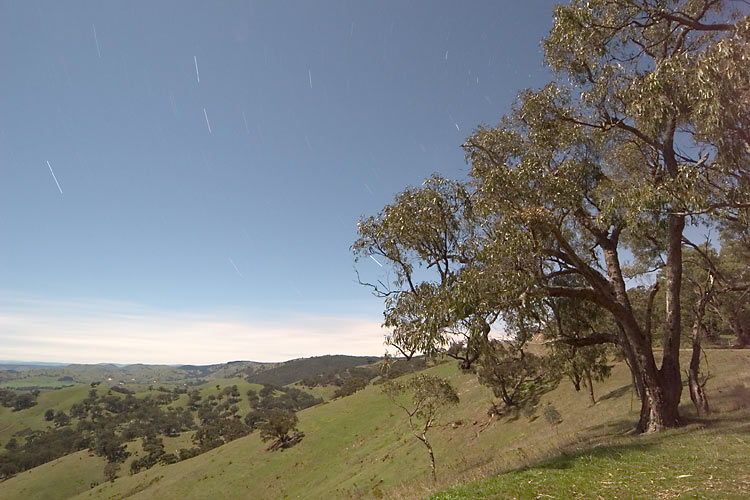
ISO 200, f11, 16.2 mins exposure, 12-24mm lens @12mm
Shutter open for 30 minutes! (29th July 2004)
With a new RC-1 remote control I was finally able
to do bulb exposures on my 300D. A 20 minute test shot in my backyard looked surprisingly
good, so I decided to experiment further at a location with very little ambient
light... just a full moon overhead. I did a 30 minute shot at ISO100,
and a 15 minute shot at ISO200. Aperture was fixed at f11 for both shots
as it is impossible to gain sharp focus visually in moonlight with a 300D. This is
the main reason I needed to do such a long exposure in the first place.
I ran out of time (and nearly battery power) after taking these, but I
hope to do more interesting shots when the sky isn't overcast. If the stars
showed tonight, there would have been a nice trail across the top half of
the shots.
All shots were done in RAW mode, and the levels were boosted quite a bit in
Photoshop so that they display reasonable detail in a browser, rather than
a very dark image. This was just a quick experiment so I didn't have the time
to fiddle with exposure too much.
1:1 crops of each image

ISO 100, f11, 30 mins exposure, 12-24mm lens @12mm |
|
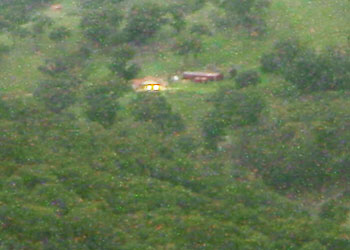
ISO 200, f11, 15 mins exposure, 12-24mm lens @12mm |
Note that the speckle pattern is fairly consistent
between the two shots (for example, around the bottom left of the crop).
This is good news since it probably means that the noise
can be profiled, and the majority of it masked away. (Update: some
experimenting with Photoshop "Difference" blending with a dark shot done
back at home has produced reasonable results. It would probably work
better if I take the dark shot immediately before or after the photo)
Complete frames
The significant reduction in dimensions to fit into
a browser also helps cover up
the speckles. I found that even a reduction to 75% (ie, a 4.5MP image) got rid of most of it.
There are a few noticeable "always on" coloured areas of about 3x3 pixels each
scattered around the image which can be cloned out manually.
Does this look like a photo taken at 9pm on a winter's night to you? :)
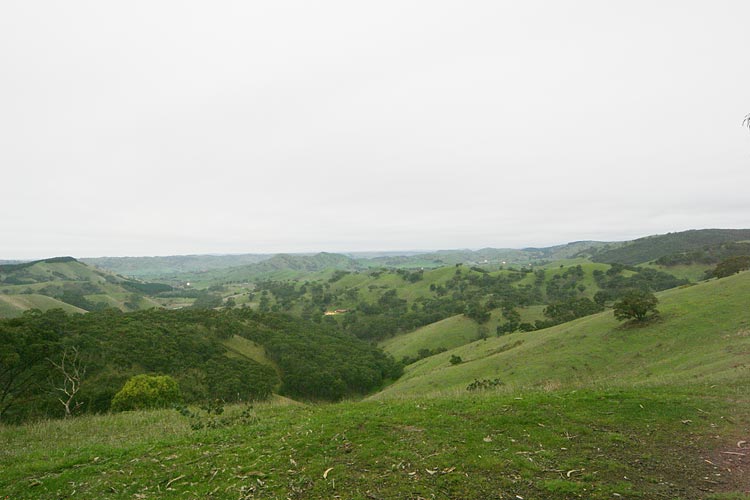
ISO 100, f11, 30 mins exposure, 12-24mm lens @12mm
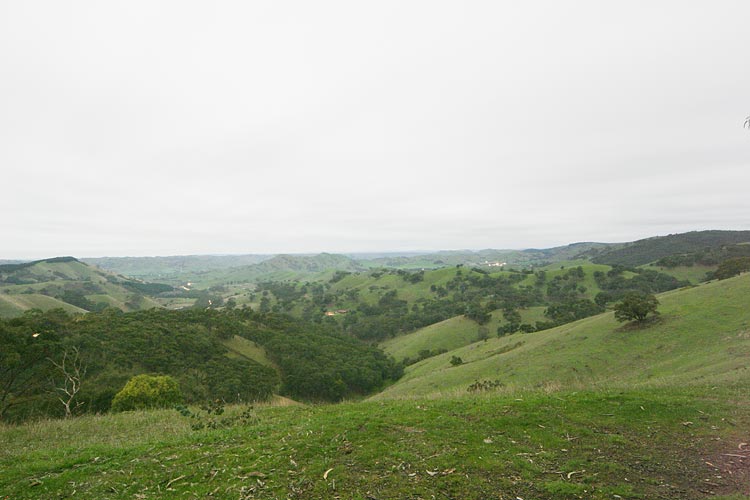
ISO 200, f11, 15 mins exposure, 12-24mm lens @12mm
(Note car headlight trails to the left)
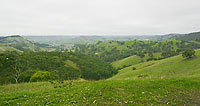
Click the thumb to see full size manipulation (crop, colours, reduce noise)
All images on this page are copyrighted by Rowan Crowe - sensation.net.au at rowan (swap the username and domain for correct order)
|